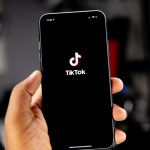News
The much-anticipated deal will see BT, Vodafone, O2, and Three share their mast network to improve coverage, as well as building out more infrastructure
Plans for the UK’s ambitious Shared Rural Network (SRN) have been in the works for some time, with a general outline of the plan signed last year. The plan centres around a joint investment from the UK government and operators, with the operators agreeing to share their mast infrastructure with each other to improve coverage, as well as joint builds to cover ‘not spots’.
However, getting four of the UK’s biggest rivals to cooperate is difficult at the best of time, with the companies butting heads when it came to charges to access one another’s existing sites. BT issued a cost proposal in January, but this quickly came under fire by the other operators; as BT has more infrastructure than the other operators, it proposed large reciprocal costs of over double the commercial rate for access to their mast infrastructure.
“We think it’s fair and reasonable that this investment and the current value of the site are both taken into account and need to be recognised when others come to ‘share’ it,” explained BT’s CEO Marc Allera in a statement.
However, the other operators decried the fees, with O2 suggesting they could derail the project entirely.
Nonetheless, it seems that terms have finally been agreed, with today’s announcement that the £1 billion SRN is to finally go ahead. The UK government will invest £500 million in the project, with the other half being contributed by the operators.
It seems that the new agreement will see Three, O2, and Vodafone build out new masts in some currently non-specified locations, while BT will not share the same obligations, presumably the offset their increased sharing requirements.
The stated goals of this final agreement are largely similar to the previous proposal, seeking to increase geographic 4G coverage to 95% by the end of 2025.
A new jointly owned company, Digital Mobile Spectrum Limited, will oversee the project, ensuring the new coverage extends to 280,000 additional premises and 16,000 km of roads.
“The Shared Rural Network will transform mobile coverage across the UK. Together, industry and government will bring 4G coverage to 95% of the UK, giving a real boost to rural businesses and communities,” said Ben Roome, CEO of the new Digital Mobile Spectrum Limited.
In general, the industry seems pleased to see the project finally get underway.
“Hopefully this will now finally put the issue to bed. Of all the options available to the government, the one that brings the industry along with them will surely have the best chance of success,” said Matthew Howett, principal analyst and founder of Assembly Research.
This announcement is clearly good news for connectivity for some of the UK’s harder to reach areas and it could set a precedent for further sharing in future, particularly for 5G coverage.
However, the final 5% to be covered by the SRN will ultimately remain a significant challenge, both for mobile and fixed coverage, and the government may need to turn to smaller organisations if it is to ever reach their lofty goal of creating gigabit Britain.
“The last five percent, at least of the geography, will need attention sooner rather than later,” explained Oliver Johnson, CEO of Point Topic. “There is some recognition of this, of course, and plenty of great projects out there – see B4RN for example – that could be useful partners in the slow-motion race to provide for the most rural areas.”
How will the SRN change the face of rural connectivity in the UK? Find out at this year’s Connected Britain
Also in the news:
Vodafone launches #ChangeTheFace initiative to boost diversity in tech sector
Vodafone and TIM to get green light to make Europe’s largest tower company
Nokia partners with Intel for a 5G helping hand
















